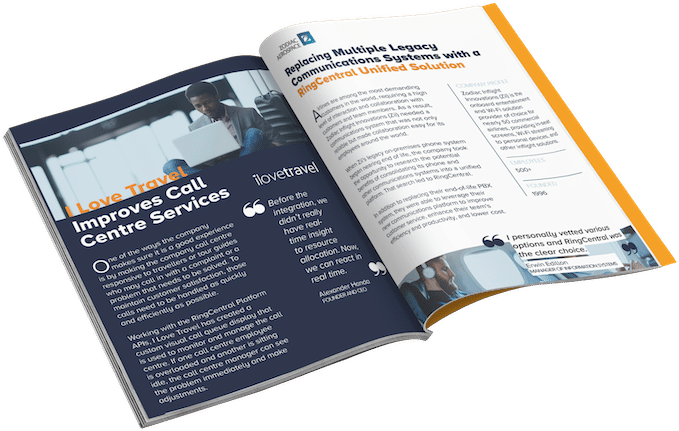Advancement in technology in today’s modern age has brought along positive adjustments to several industries, including the employment sector. Today, employers, employees and the entire corporate entity can exchange files, communicate and collaborate on tasks without the additional pressure of commuting and dealing with other workplace disruptions. Without any doubt, flexible working arrangements are gradually becoming the new standard moving forward. So, what is flexible working and what are the tools and terminologies you need to familiarise yourself with when venturing into a flexible working arrangement?
What is flexible working?
Flexible working, commonly referred to as flexitime or flextime, is a non-conventional working arrangement that does not have the traditional constraints of a typical job. This new working arrangement considers the worker’s personal needs and allows most individuals to find a healthy balance between personal and employment life. Typically, flexible working involves employees dividing their time between the office and other locations, typically working from home.
Benefits of flexible working
A flexible working arrangement has plenty of benefits for both the employers and the employees. Both the employer and the employee can benefit from flexible working. Employees can obtain a healthier work-life balance, reduced absenteeism, and lower stress levels. It is handy for people who work a second job or working students with other major obligations. However, here are some of the top advantages of flexible working.
1. Ease of management
Less demanding management is one-way employers can benefit from flexible working arrangements. Managing employees working on a non-standard shift is easier because they only require managerial input when collaborating with their colleagues in projects or communicating concerns.
2. Reduced stress and burnout
Stress and burnout are the leading causes of poor productivity in any workplace. Encouraging remote working and telecommuting is one of the best ways to reduce stress and burnout, thus ensuring a more productive task force.
Stress is harmful to your wellbeing, so working flexible hours or from home will help you reduce your stress levels by excluding your everyday routine from the equation. Controlling your time often eliminates the need to squeeze tasks between tight working hours, which adds to the pressure and stress.
3. Job satisfaction
Job satisfaction for employees is the other benefit of flexible working arrangements. Like less stress and burnout, better job satisfaction can help increase employee engagement and performance, thus ensuring high productivity.
In addition to that, the ability to handle your own time will boost your morale and sense of accountability for the job and the business. As a result, you’ll have a greater sense of control over your work, making it more fulfilling and enjoyable.
4. Reduced costs
For employers, flexible working arrangements allow for an increased employee headcount without a larger office space. That can save a company money by reducing the costs involved costs in renting office spaces, buying furniture, and other infrastructure required by in-office employees. Especially if a company is running out of office space, it would be reasonable to hire employees that work from home, whether full-time or part-time, to prevent spending money on larger spaces.
Employees also need to use technology to engage in meetings, presentations and collaborate on projects. With flexible working arrangements, all employees would need access to the internet, a business phone, and a computer. In this case, working from home would reduce electricity costs.
5. Enhances retention and attraction
Companies allowing flexible hours for their employees will only help them maintain valuable staff since flexible work schedules are among the most sought-after benefits from their employers. A lot of organisations are still very hesitant when it comes to flexible working arrangements. However, employers who allow this method have a significant comparative advantage in the recruiting process and have access to a much larger pool of talent.
Since the young generation of employees has different aspirations than their seniors, the acceptance of flexible employment is expected to increase rather than decrease.
Examples of flexible working arrangements:
- Part-time: A part-time employee works fewer hours than a full-time employee. They work in shifts to keep up with the demands of their employment. There is no defined number of hours determining full-time or part-time employment, although full-time employees often work 35 hours or more a week. Common industries where part-time jobs are common include the hotel and service industry, manufacturing, customer service and call centres, healthcare, and the social media content moderation industry.
- Working remotely: Remote working is a method of working that allows employees to work outside of a traditional office setting. It is built on the idea that work should not have to be completed in a certain location to be functional. You can work remotely at home or anywhere else; this method is also known as teleworking.
- Hybrid working: This mode of flexible working has become more common post-pandemic with the realisation by most employers that in some occupations, workers do not need to be physically present in an office every day to get the work done and there is also the need for employees to come together occasionally. Under this working arrangement, employees split their working days between an office and remotely during the week.
- Flexitime: Flexitime is a working schedule that allows workers or employees to alter the starting and finishing hours of their workday, unlike traditional working hours that require employees to work from 9 in the morning to 5 in the afternoon.
- Job sharing: Job sharing is a form of flexible work in which two employees work part-time hours to finish the work of one full-time employee.
- Compressed hours: Compressed working hours are a form of flexible working schedule in which employers reduce their usual working week into fewer days. It is about allowing workers the freedom to balance other parts of their lives, and it can be very beneficial for someone who has other major responsibilities.
Getting started on flexible working
With the right arrangements and tools in place, you can transition seamlessly to a flexible working arrangement and reap its benefits, from increased efficiency to a healthier work-life balance. Our comprehensive list below guides you on tools and tips to know before getting started.
Advice for employees working part-time
Contract: Your employer should provide you with a contract that states your working hours and the benefits you are entitled to as a part-time employee, the contract should state whether you are working part-time as part of a job-sharing agreement. Some of the details present in the contract should include the holidays calculated as a part-time worker, the pro rata salary and other benefits.
Tax code: If you are working part-time as a second job you should ensure the right tax code is attached to your job. Most second jobs have a BR, D0, or D1 tax code. When working a part-time job as a self-employed contractor, ensure you make the right arrangement to pay taxes directly or through a limited company.
Technical tools and knowledge: The tools you need to work a part-time job largely depend on whether the job is being done remotely or requires you to work from the employer’s site. For remote jobs, internal communication software should be set up on your laptop or the employer should provide a laptop with installed communications software that provides access to your share of the workload and capabilities such as email and online video calling to help you communicate with your line manager and colleagues.
Advice for managing part-time workers
Employee rota scheduling tool: Managing part-time employees can be challenging if they work outside of your standard office hours and in some cases they may be working as part of a job-sharing agreement. A proper work schedule that is convenient with the employee’s availability should be put in place to prevent part-time spilling over and ensure both parties know when the employee is working.
In the case of a job-sharing agreement, the schedule should provide a prompt solution for cases where one of the employees feels unwell or is unable to work due to personal issues. Providing an online employee availability tool where the employees can state their availability and ability to work outside of their usual time will provide an employee-centred solution
Organisational introductory documents and policies: This should help introduce the employee to the company and internal policies, a hierarchy structure for part-time employees should be available and their progression paths.
Internal communication software: Using communication software is an ideal way to ease communication and the flow of information among employees working part-time.
Advice for employees working remotely
Time management: To be successful in remote working, time management is an essential skill. This is especially important if you are working on targets or working with colleagues located in geographical areas in other time zones. To manage your time effectively, set personal targets to accomplish tasks and minimise disturbances by putting your phone on airplane mode when working.
Having a daily to-do list based on priority tasks will help ease the pressure of having to rush to beat deadlines. Wellness breaks and knowing when to unplug from working is very important as it helps you feel recharged and motivated to take on your next task.
Remote working equipment: Working from home requires a well-equipped office desk so employees can work efficiently as they would in the office. Equipment such as a work laptop or computer, a fast internet connection, and a comfortable work desk and office chair are necessities and should be provided. You may choose to work from a co-working space if you crave the aspect of working from an office setting.
Internal communication software: Secondly, your employer should provide access to software that can help you keep in touch with your colleagues for work purposes through emails, video calling, team video chats, and online conference calls. Communication is vital for any modern business, and remote workers should be able to communicate just as effectively.
Advice for employers with remote workers
Remote working equipment: Since your employees will be working from remote locations, employers should aim to ensure that employees have the right equipment to facilitate their work. This can be achieved through the provision of allowances for work PCs and supporting equipment such as work desks, chairs, and cables.
Cloud database: Working remotely means employees will have little time to come together, hence a work-tracking cloud database will ease communication and help employees know the tasks assigned to them. It will also aid in tracking the progress of tasks assigned to employees.
Internal communication software: A robust, efficient, and seamless communication system is vital to ease communication and the flow of information among employees. The software should enable employees to link up through emails, video conferencing, online video meetings, and messaging apps.
Cybersecurity policies and procedures: Secure mechanisms should be put in place to avoid the infiltration of the communications software and cloud database software by hackers and any other attack that may lead to the loss of sensitive information. Your organisation could be more vulnerable if the employees are working remotely from their personal laptops. Remote working cybersecurity procedures should indicate the steps to prevent attacks and how to deny access to employees who are no longer working for the company.
Meeting Scheduling tool: This is particularly helpful when managing employees working in different geographical regions. Free meeting scheduling tools can help you save money and operate an employee-centred tool where employees can state their availability.
Employee mental health support system: Working remotely can take it’s toll if employees don’t have a proper support network. During the pandemic, some employees reported being fatigued from long online meetings, hence a proper plan should be put in place on how to support the mental health of employees. This can be achieved through collaborations with charities offering mental health support for employees, having wellness breaks for employees and having the services of internal mental health counselors and practitioners.
Hybrid working advice for employees
Time management skills: While time management is an essential skill generally, it is particularly important in hybrid working as your time will be split between an office and working remotely. Knowing what tasks are best performed from home and tasks that are best performed from the office will help you plan your time accordingly.
Building positive relationships: Hybrid working means most likely that your first working days may be spent working remotely hence building a positive relationship with your colleagues will help you integrate to the team much more quickly and learn on the job. Attending more in-person company events will help you create human connections with your team members and fellow colleagues.
Hybrid working advice for employers
A clear policy on remote and office work balance: While this model of working is new to most employers, having a people-centred policy on the hybrid working arrangement will contribute greatly to the success of the hybrid work model. Common hybrid working models may entail a 3-2,2-3, office occasional and designated work-from-home days. The policy can also entail the kind of duties that can be worked remotely and those that need to be performed from the office premises. Should you be looking into hybrid working to reduce your office footprint, having a policy that allows different work from office days for different departments will ensure a smooth working environment.
Create an equality policy for hybrid and non-hybrid workers: Creating an equality policy will help create a balance for employees with a hybrid working arrangement and employees who are working in the office full-time. This can be done through incentives such as transport and lunch allowances for employees who work more from the office and creating more company in-person events for employees who work fewer days from the office.
Cloud database: Working hybrid means employees will have less time to come together, hence a work-tracking cloud database will ease communication and help employees know the tasks assigned to them. It will also aid in tracking the progress of tasks assigned to employees.
Video conferencing-enabled meeting rooms: A hybrid arrangement means that in most cases not all employees are going to be in the office at the same time, hence having a video conference-enabled meeting room will help employees who are unable to make it to the office during meeting days can dial in. A good video conferencing meeting room has to be fitted with equipment such as broadband internet, cameras, speakers and display screens.
Cybersecurity policies and procedures: Secure mechanisms should be put in place to avoid the infiltration of the communications software and cloud database software by hackers and any other attack that may lead to the loss of sensitive information. Your organisation will be largely vulnerable if the employees are working remotely from their personal laptops. The security procedures should indicate the steps to prevent attacks and how to deny access to employees who are no longer working for the company.
Applying for flexible working
As we’ve discussed above. In the UK, employees have a right to make a flexible working request if they have either worked for their employer for more than 26 weeks, they’re legally classed as an employee and they’ve not made a similar request in the last 12 months. Businesses are, by law, required to look at any flexible request fairly and respond with an answer within 3 months. For more information on applying for flexible working, you can visit Gov.uk.
The Steps to apply for flexible working
For employees who want to move to a flexible working arrangement, the following steps are available.
- Employees should request time off officially in writing, though it may be worth discussing this informally with managers beforehand, and you discuss the benefits of this arrangement, the specific reasons for moving to a flexible working arrangement, and what the employee will need to make the transition to flexible working seamless and beneficial for both parties.
- Employers must respond within 3 months of the written request. If the employer rejects this request, the reasons for this must be clearly explained to the employee. If the employer is happy to go ahead with a flexible working arrangement, the employee’s contract must be updated to reflect this.
Starting a flexible working arrangement can be daunting, however with the right tools and strategies in place it can be beneficial to both employees and employers. Discover how RingCentral can help with our remote working resource hub.

Originally published Jan 17, 2023, updated Feb 13, 2023





